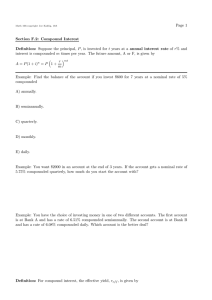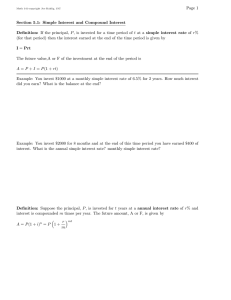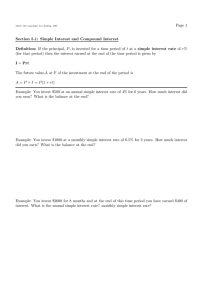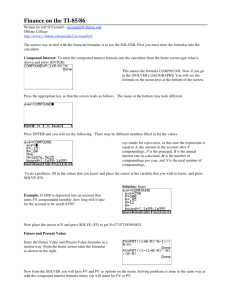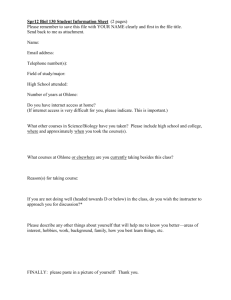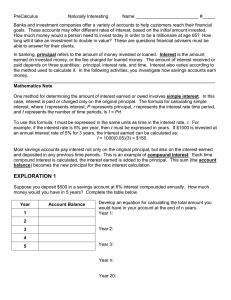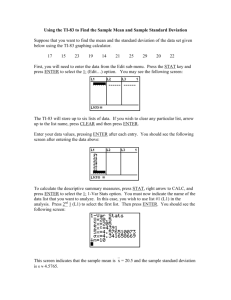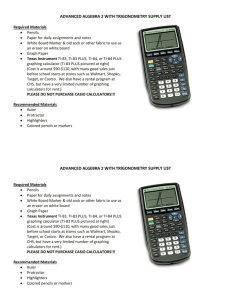Finance on the TI-83/TI-83 Plus/TI-84
advertisement
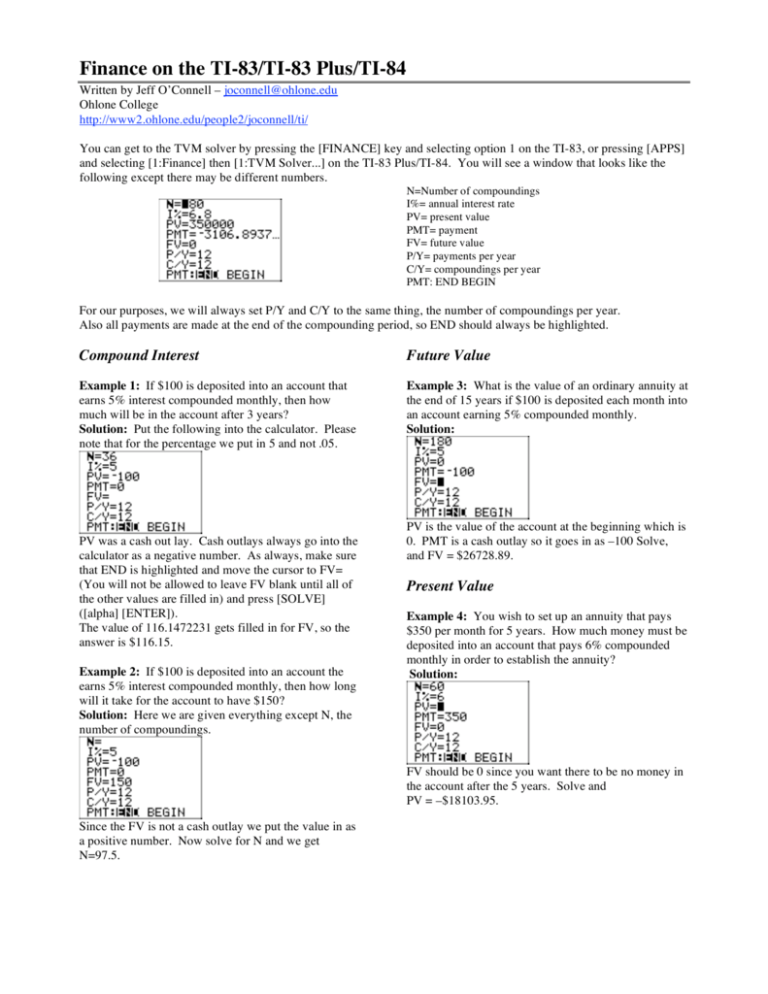
Finance on the TI-83/TI-83 Plus/TI-84 Written by Jeff O’Connell – joconnell@ohlone.edu Ohlone College http://www2.ohlone.edu/people2/joconnell/ti/ You can get to the TVM solver by pressing the [FINANCE] key and selecting option 1 on the TI-83, or pressing [APPS] and selecting [1:Finance] then [1:TVM Solver...] on the TI-83 Plus/TI-84. You will see a window that looks like the following except there may be different numbers. N=Number of compoundings I%= annual interest rate PV= present value PMT= payment FV= future value P/Y= payments per year C/Y= compoundings per year PMT: END BEGIN For our purposes, we will always set P/Y and C/Y to the same thing, the number of compoundings per year. Also all payments are made at the end of the compounding period, so END should always be highlighted. Compound Interest Future Value Example 1: If $100 is deposited into an account that earns 5% interest compounded monthly, then how much will be in the account after 3 years? Solution: Put the following into the calculator. Please note that for the percentage we put in 5 and not .05. Example 3: What is the value of an ordinary annuity at the end of 15 years if $100 is deposited each month into an account earning 5% compounded monthly. Solution: PV was a cash out lay. Cash outlays always go into the calculator as a negative number. As always, make sure that END is highlighted and move the cursor to FV= (You will not be allowed to leave FV blank until all of the other values are filled in) and press [SOLVE] ([alpha] [ENTER]). The value of 116.1472231 gets filled in for FV, so the answer is $116.15. Example 2: If $100 is deposited into an account the earns 5% interest compounded monthly, then how long will it take for the account to have $150? Solution: Here we are given everything except N, the number of compoundings. PV is the value of the account at the beginning which is 0. PMT is a cash outlay so it goes in as –100 Solve, and FV = $26728.89. Present Value Example 4: You wish to set up an annuity that pays $350 per month for 5 years. How much money must be deposited into an account that pays 6% compounded monthly in order to establish the annuity? Solution: FV should be 0 since you want there to be no money in the account after the 5 years. Solve and PV = –$18103.95. Since the FV is not a cash outlay we put the value in as a positive number. Now solve for N and we get N=97.5.
